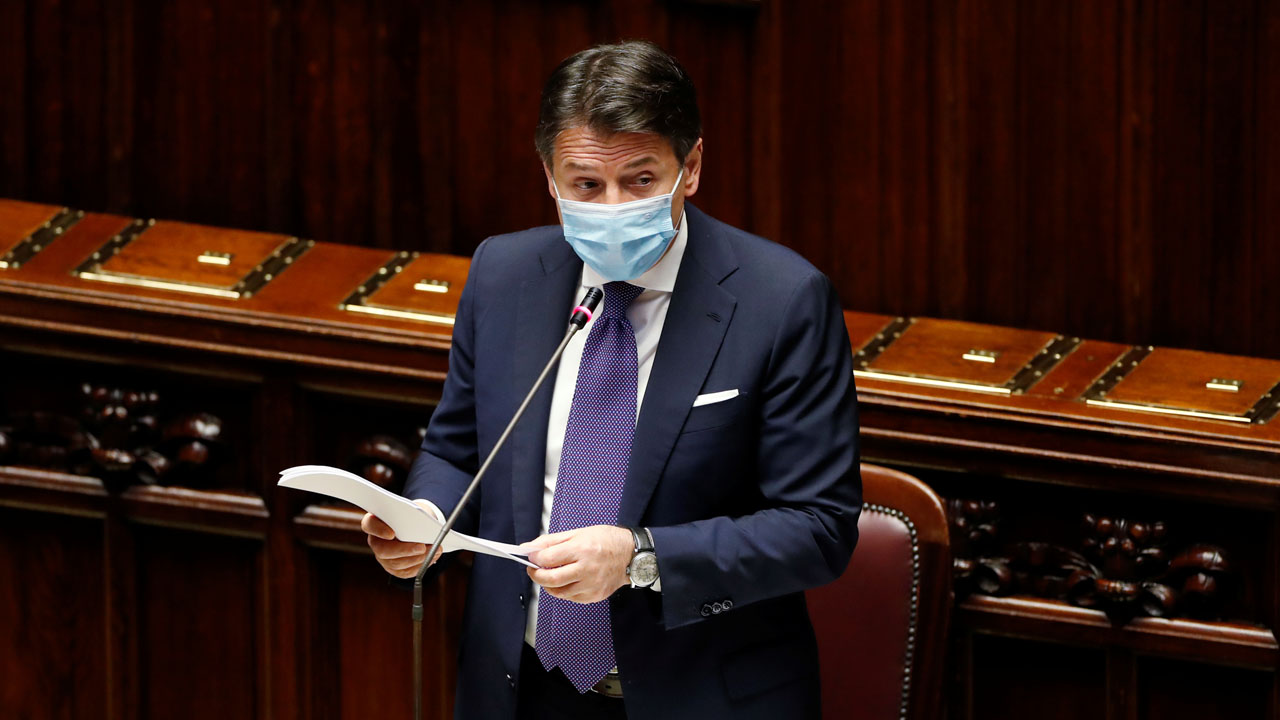Italy’s northern regions began a month-long lockdown Friday and the country braced for a new curfew, as the government tries to stem a surge in coronavirus cases despite signs of growing unrest.
The latest decree signed by Prime Minister Giuseppe Conte divides Italy into three zones according to the level of risk, with a lockdown ordered for prosperous Lombardy, fellow northern regions Piedmont and Val d’Aosta, as well as one southern region, Calabria.
The normally bustling centre of Lombardy’s capital Milan was subdued on Friday, with those still circulating under grey skies heading to or from work or shopping for essentials, as allowed under the new rules.
“A lot of people see this as an unfair decision and in fact, it’s a little bit the case,” said Suzy Porcu, 55, a Milan resident. “If you need to have a lockdown it should be for everyone.”
“In either case, we haven’t learned anything from what we went through in March.”
Italy was the first European country to be hit hard by the coronavirus pandemic in March, and the government imposed a more than two-month quarantine that battered its already struggling economy.
Infection rates slowed over the summer but, as in other parts of Europe, the virus has surged once again in recent weeks, with 445 new deaths and 34,505 new cases reported on Thursday.
Fresh restrictions, which include the new countrywide curfew from 10 pm-5 am as well as the early closure of bars and restaurants introduced late last month, have already set off protests, including in areas spared the most stringent lockdowns, such as Rome and Naples.
‘No other way’
Italians largely supported, and respected, the quarantine earlier in the year but the prospect of another punishing lockdown has sent some of them on the streets.
In the northern city of Bergamo — the epicentre of the first outbreak — several hundred protesters demonstrated in front of the mayor’s home Thursday night, hurling smoke bombs and shouting “Liberty”.
Mayor Giorgio Gori wrote on Facebook that unlike during the first quarantine — when images of army trucks in Bergamo transporting coffins from the overflowing morgue were seen around the world — “there is more tiredness and more distrust around.”
Regional leaders have contested their status as “red” or “orange” zones, as the highest risk areas are called, but Health Minister Roberto Speranza told parliament on Friday that “there is no other way”.
“There are over one million dead in the world, these figures speak for themselves,” he said.
The head of the infectious diseases department at Milan’s renowned Sacco hospital, Massimo Galli, told reporters Friday he was “alarmed” and had been ever since the end of Italy’s first lockdown in May.
“I’ve always confirmed that you have to keep on high alert to avoid the return of problems,” Galli said.
“I’m sick of saying the same things, like the voice screaming in the desert without any acknowledgement.”
By AFP
In this article:
 |
| Italian Prime Minister Giuseppe Conte addresses members of the lower house of parliament during a session on the coronavirus disease (COVID-19) situation, in Rome, Italy November 2, 2020. REUTERS/Remo Casilli |
